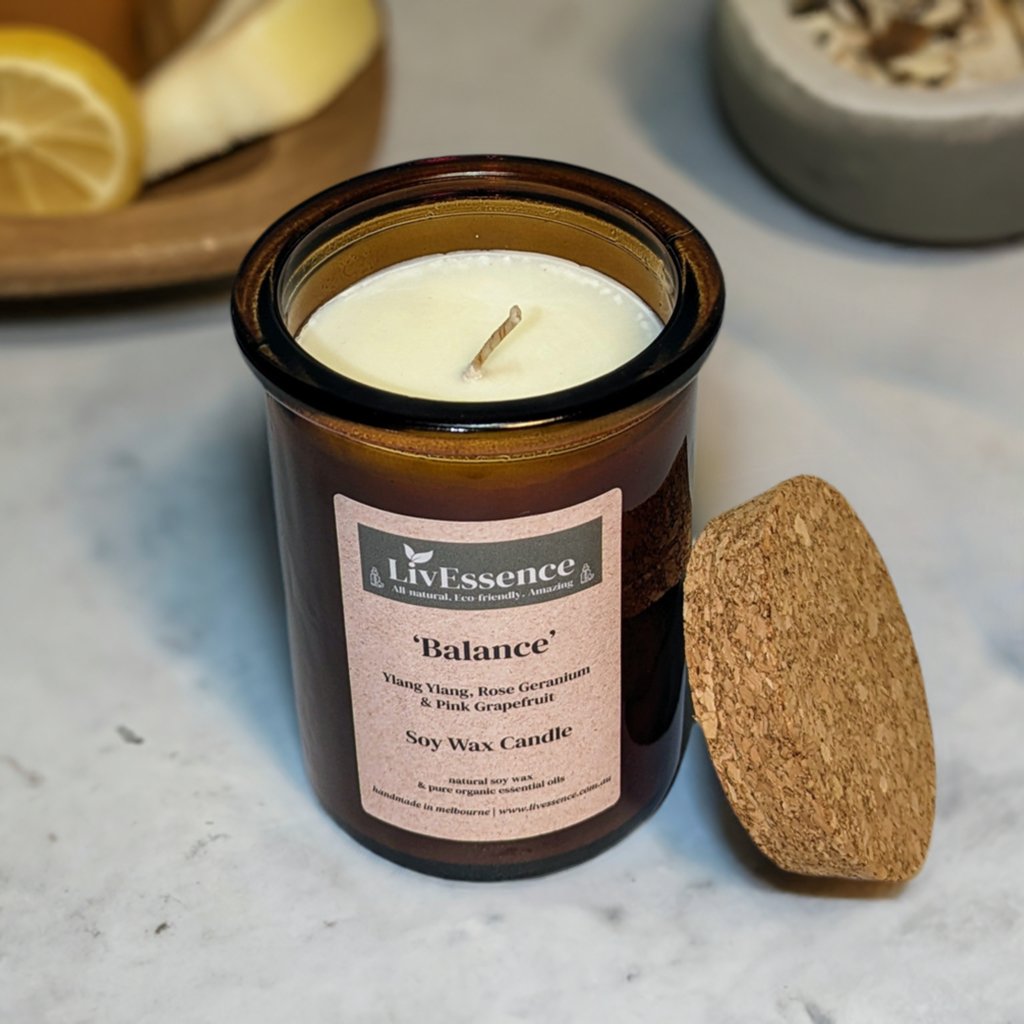Transform Your Home with Eco-Friendly Soy Candles and Home Fragrance
Transform Your Home with Eco-Friendly Soy Candles and Home Fragrance
Blog Article
From Wick to Wax: Recognizing the Chemistry Behind Soy Wax Candles and Their Environmental Influence
As we brighten our areas with the warm radiance of candles, there lies a world of complex chemistry behind the seemingly basic act of lighting a soy wax candle. The option in between soy and paraffin wax extends beyond plain visual appeals, diving right into the realm of ecological effect and the very composition of the materials. Understanding the molecular structure of soy wax and its burning procedure sheds light on the exhausts launched into our surroundings. Join us as we unravel the scientific ins and outs behind soy wax candle lights and explore their effects on our atmosphere.
Soy Wax Vs. Paraffin Wax
When contrasting soy wax and paraffin wax for candle light production, it is vital to recognize the distinct qualities and benefits of each material. Soy wax is a natural, renewable resource obtained from soybean oil, making it naturally degradable and eco-friendly - soy wax candles. In comparison, paraffin wax is a by-product of oil refining, which increases worries about its environmental impact and sustainability
Soy wax candles shed cleaner and emit much less residue compared to paraffin wax candles, making them a healthier choice for indoor air quality. In addition, soy wax has a lower melting factor, permitting a longer-lasting candle that spreads fragrance extra properly. Paraffin wax, on the various other hand, has a tendency to melt faster and much less cleanly, potentially releasing hazardous chemicals into the air.
From a sustainability perspective, soy wax is favored for its biodegradability and eco-friendly sourcing, straightening with the expanding customer preference for environmentally mindful items. While paraffin wax has been a standard selection in candle making because of its affordability and ease of use, the change towards environmentally friendly choices like soy wax is gaining momentum in the market.
Chemical Structure of Soy Wax

Combustion Refine in Soy Candles
The chemical composition of check that soy wax directly affects the combustion procedure in soy candles, affecting elements such as melt time, fragrance launch, and environmental effect. When a soy candle is lit, the warm from the fire melts the wax near the wick.
The burning performance of soy candle lights is influenced by the purity of the soy wax and the top quality of the wick. Additionally, soy wax candles have a reduced ecological influence contrasted to paraffin candles due to their eco-friendly and biodegradable nature.

Environmental Advantages of Soy Wax

Taken into consideration a lasting choice to typical paraffin wax, soy wax provides remarkable environmental benefits that make it a prominent choice among eco-conscious customers. One significant benefit of soy wax is its renewable sourcing. Soy wax is originated from soybean oil, which is primarily grown in the USA. The farming of soybeans aids sustain regional farmers and decreases the dependence on non-renewable nonrenewable fuel sources made use of in paraffin wax production. In addition, soy wax is naturally degradable, suggesting it breaks down normally without launching damaging contaminants right into click for info the setting. This characteristic makes soy wax candle lights an extra eco-friendly option contrasted to paraffin wax candle lights, which are made from oil, a non-renewable resource. Soy wax burns cleaner and creates less soot than paraffin wax, adding to better indoor air quality and reducing the requirement for cleansing and upkeep. Generally, the environmental benefits of soy wax align with the growing need for lasting and environment-friendly items in the marketplace.
Recycling and Disposal Considerations
Reusing and appropriate disposal of soy wax candle lights play a vital function in keeping environmental sustainability and decreasing waste in homes and communities. When it comes to reusing soy wax candles, the first step is to make certain that the candle has shed completely.

In regards to disposal, if recycling is not an alternative, soy wax candles are eco-friendly and can be securely disposed of in the majority of family waste systems. It is always advised to check with neighborhood recycling facilities or waste administration services for specific guidelines on candle light disposal to guarantee appropriate handling and ecological defense.
Conclusion
In final thought, the chemistry behind soy wax candles exposes their ecological benefits over paraffin wax candles. Soy wax, acquired from soybean oil, burns cleaner and produces much less soot when compared to paraffin wax.
When contrasting soy wax and paraffin wax for candle light making, it is vital to comprehend the unique characteristics and benefits of each material (soy candles).Soy wax candle lights shed cleaner and release much less soot compared to paraffin wax candles, making them a much healthier selection for interior air high quality.Considered a sustainable alternative to standard paraffin wax, soy wax supplies notable ecological benefits that make it a prominent selection amongst eco-conscious customers. Soy wax burns cleaner and produces less soot than paraffin wax, adding to far better interior air quality and lowering the need for cleaning and upkeep.In conclusion, the chemistry behind soy wax candles reveals their ecological benefits over paraffin wax candles
Report this page